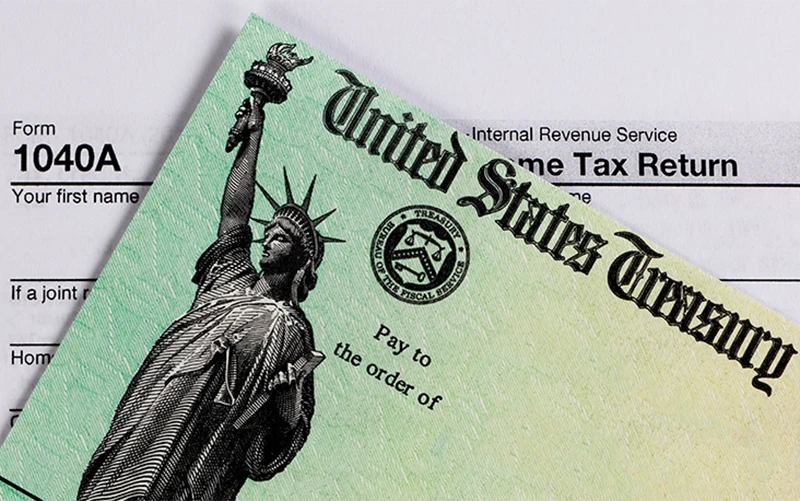From Investopia.com — By Terry Lane —
Tax refunds were lower this year, and while the expiration of pandemic credits may be primarily to blame, tax experts say Americans should count on smaller refunds and more balances owed in coming years.
- The average tax refund for the 2022 tax year is $259 lower than last year.
- Fewer people received refunds this year.
- Covid-era tax benefits expired, impacting many refunds.
- A change in the W-4 income tax withholding form is creating lasting impacts to refund amounts.
The average tax refund of $2,753 for the 2022 tax year was $259 lower than last year, according to Internal Revenue Service data through April 21. The expiration of expanded child, dependent, and earned income tax credits, as well as a special allowance for charitable deductions, all helped deflate taxpayer refunds for the 2022 tax year.
While taxpayers often experience “refund shock” when they get less back than they expect, this year’s condition could better be described as “balance due trauma,” said Mark Steber, chief tax information officer at tax preparation service Jackson Hewitt.
It wasn’t just that the average refund was lower this year, fewer refunds have gone out, and more people owe money, he said.
“There were a large number of people who just could not come up with the money to pay,” Steber said of taxpayers with a balance due. “And the problem will be compounded next year.”
According to IRS data, 3.1% fewer refunds were handed out than the same time last year.
Covid pandemic credits expired
To respond to the Covid pandemic, Congress added several temporary tax credits that applied to the 2021 tax year.
The pandemic benefits raised the child tax credit to $3.000 from $2,000 for under 16-year-olds, and the temporary benefits for children under 6 years old were raised to $3,600. The pandemic also raised the income levels and extended the age range for the earned income tax credit, while adding an additional $300 deduction for charitable contributions.
All the temporary tax credits have expired, reducing some refunds this tax season.
Another contributing factor was changes the IRS made to the W-4 income tax withholding form in 2020. These changes were part of a series of reforms that eliminated the personal exemption and doubled the standard deduction.
While intended to make tax preparation simpler, the changes also caught millions of taxpayers unprepared for smaller refunds, or even worse, balances due.
“The simpler part was to give people back more money. The unintended consequence was there were lower withholdings,” Steber said, adding that some taxpayers didn’t notice these changes because of the pandemic refund boost last year. “We really didn’t see it come to roost until this year.”
Fewer returns filed this year
It’s not just average refunds that are downs. The IRS has taken in 1.3% fewer tax returns, given out 3.1% fewer refunds, and paid 11.4% less in total refund amounts than it did at this time last year.
While the reason that refunds are lower wasn’t hard for tax experts to pinpoint, there were questions as to why other tax statistics are down this year, and particularly why fewer Americans have filed tax returns at this point in the year.
Steber said because there were no pandemic benefits this year, fewer Americans filed. Fraud prevention and more balances owed could also have prevented more returns from coming in, he added.
Contact Kleshinski, Morris & Morrison CPAs
If you need help with your tax planning or any type of professional accounting services, contact our experts at Kleshinski, Morrison & Morris CPAs. Call our office at 419-756-3211, reach us by sending email to kmm@kmmcpas.com, or just fill out the contact form on our website at this link.

